Educators are the backbone of our society, shaping the intellectual capacities and futures of generations to come. Their commitment and hard work are apparent, yet the job demands are sometimes underestimated. According to a recent study, educators work an average of 52 hours per week, with less than half of that time spent on actual teaching. Furthermore, just 49% of their time is spent interacting directly with learners. This article explores these findings and the potential of technology to reshape education, allowing educators to reallocate their time more efficiently and create customised learning experiences.
The 52-Hour Workweek: Unveiling the Reality
According to the EdWeek Research Center, educators work 52 hours a week on average. This statistic is a stark reminder of the enormous attention and hard work educators put into their jobs. What’s more shocking is that less than half of this time—specifically, only 25.2 hours—is spent on actual teaching. This study brings down an assumption that education is simply about classroom instruction. Educators appear to be involved in a wide range of responsibilities outside of the classroom, such as lesson preparation, grading, administrative work, and professional development.
The Disconnect: Educators and Learner Interaction
Another startling fact is that educators only spend 49% of their time directly interacting with learners, based on McKinsey and Company research. This means that a significant amount of their workweek is spent on duties that do not need them to interact with those they are supposed to teach. This raises the issue of why there is such a disparity between the amount of time educators contribute and the amount of time they spend directly with learners.
The Quest for Personalisation: Challenges and Roadblocks
One of the aims of modern education is to deliver personalised learning experiences that match each learner’s needs. According to the EdWeek Research Center survey, 60% of educators claimed they provided tailored feedback to their learners. Only 44% of learners agreed, though. This disparity raises an important question: Why do educators evaluate their personalised efforts differently from the learners they are attempting to provide?
The answer lies in the challenges and roadblocks that hinder the quest for personalisation in education. The most prominent obstacles include:
- Time: As previously stated, educators are overburdened with a 52-hour workweek on average. Finding the time to personalise learning experiences for each learner may be challenging.
- Resources: Personalisation requires access to suitable resources such as extra resources and technology for their learners’. Regrettably, not all schools or educators have equal access to these tools.
- Materials: Creating individualised learning materials takes time. Many educators rely on standardised materials that may not meet their learners’ needs.
- Technology: While technology has the potential to improve personalisation, not all educators are well-versed in its use. Lack of training and access to technology can be significant obstacles.
The Promise of Technology
In the middle of these difficulties, technology emerges as an influential friend for educators. It can address many of the barriers to personalisation. Here’s how it’s done:
- Time Reallocation: According to McKinsey and Company, technology can help educators reallocate 20 to 30% of their time to activities supporting learner learning. Technology can simplify administrative chores by automating grading, analysing data, and generating worksheets.
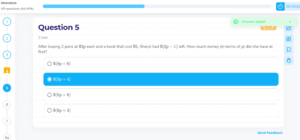
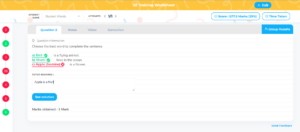
HeyHi Assessment with Auto-Marking and Tutor Feedback System
- Customised Learning: Learners can benefit from personalised learning paths provided by educational software and platforms. Individual progress is used to change material and tempo, ensuring that each learner receives teaching that is personalised to their needs.
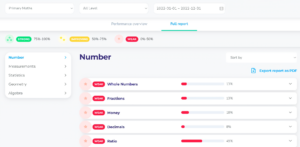
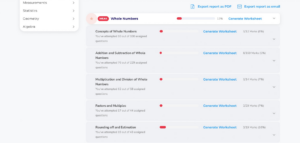
HeyHi Learner’s Progress, Strengths, and Weaknesses Identification along with Tailored Worksheet
- Data-Driven Insights: Technology may offer educators helpful information about how well learners perform. This information may be used to determine learners’ strengths and problems, allowing educators to provide focused assistance.
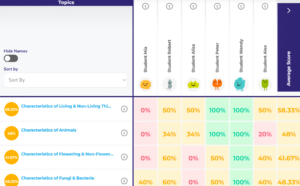
HeyHi’s Matrix of Student Performance by Topics
- Collaboration and Communication: Online platforms make communicating easier for educators, learners, and parents to communicate. This can result in more effective teamwork and a better knowledge of the needs of each learner.
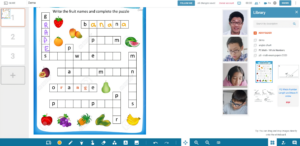
HeyHi Collaboration
Read more: Pros and Cons of Technology in the Classroom: Which Side Are You?
The Gift of Time: What Can Educators Achieve?
Educators can gain an additional 13 hours per week if they can reallocate 20 to 30 percent of their time through technology. The question now is, what can they accomplish with this valuable time? The possibilities are transformational, and they have the potential to lead the way for an education system that promotes personalised learning.
- Personalised Learning: The extra time may be used to develop a curriculum, design creative teaching materials, and experiment with new teaching practices. Educators might improve their educational approaches to accommodate their learners’ different requirements and learning styles. This may lead to more engaging and practical courses that resonate profoundly with learners.
- Professional Development: Educators might use the extra hours to engage in their own professional development. Continuous learning and growth are essential for keeping up with the most recent teaching strategies, technology tools, and educational research. As a result, learners benefit by receiving the most up-to-date and practical education.
- Work-Life Balance: Aside from the classroom, educators may prioritise their own health and create a healthy work-life balance. Teaching may be emotionally and psychologically draining, and the extra 13 hours a week might allow for more leisure time, family activities, and self-care. An educator who is well-rested and content is better able to give effective education.
- Parental Involvement: A comprehensive educational approach requires closer interactions with parents and guardians. Educators may use the extra time to interact with parents more effectively, discuss learners’ progress, and include parents in their learner learning experience. This collaboration has the potential to improve learner assistance both inside and outside of the classroom.
Conclusion
The working hours of educators and the problems they encounter in providing individualised instruction are challenging, but technology like HeyHi can catalyse positive change in education. By effectively leveraging HeyHi’s interactive online platform, educators can save valuable time and create engaging and personalised learning experiences for their learners. Imagine the possibility of having 13 extra hours a week to focus on what truly matters – inspiring and guiding learners.
Moving forward, educational institutions, governments, and stakeholders must recognise the value of technology in education and offer the necessary support and resources to enable its successful deployment. By doing so, we can ensure that educators have the time and resources they require to inspire, lead, and develop the potential of every learner, eventually crafting a brighter future for everyone.
References:
